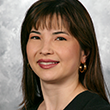Björn Rettig
VP, Global Content & Technology
PayPal
Bjorn Rettig works for PayPal as the VP, Global Content & Technology. Previously he worked at Microsoft where he was the Senior Director of the School of Applied Technology at Microsoft, the instructor of Developing International Software at the Harvard University Extension school. Bjorn is a husband, a father of two young ladies (both excited about STEM), proud geek, and a Master Woodworker. Bjorn loves to travel, to cook, and has the goal to visit all the top 50 restaurants of the world.
Bjorn was born and raised in Germany. He moved to the USA in 1992. His first role at Microsoft was working on the German version of Windows NT. He stayed in the Windows International team for 15 years in different roles, before taking on different engineering roles within Microsoft. He's the inventor of the multilingual user interface, the language interface packs, and holds six other software patents.
Nadine Kano
Partner
The Arioso Group, LLC
Nadine spent twenty-three years at Microsoft working in a variety of technical and business roles. Straight out of college, she joined the Word for Windows team, eventually signing off on several dozen Western European versions of Word, from Word for Windows 1.0 through Word for Windows 6.0. Although writing code was fun, she found she actually liked teaching better. So she transferred to the Windows team, where she lectured on software internationalization, wrote the landmark book Developing International Software, and a ton of articles for publications like Microsoft Systems Journal, Microsoft Developer Network and Multilingual Computing Magazine.
After graduating from Microsoft in 2012, Nadine co-founded The Arioso Group, LLC, a consulting firm specializing in communications, where she practices the art of helping corporations and startups tell their stories. She’s totally stoked to participate in telling the story of software internationalization, particularly since she gets to tell it in a non-boring way.
A Princeton graduate with a BSE in Computer Science, Nadine served on the university’s Computer Science Department advisory council for 12 years and augmented her computer science background with an MBA from Stanford University Graduate School of Business. She also has a culinary degree from Le Cordon Bleu in Paris, and teaches cooking classes as a hobby. She enjoys making pastries, but tries to avoid eating them.
Kasey Champion
Learning Team
Microsoft
Kasey Champion is a software engineer turned teacher. She graduated from the University of Washington with a degree in Electrical Engineering, but worked for the Computer Science Department as a Teaching Assistant for 3 years. After graduation she joined Microsoft as a software engineer, but spent her mornings volunteer teaching computer science at local high schools through the TEALS program. Recently she was lucky enough to make her passion her full time job and joined the Microsoft Learning team to develop computer science courseware.


